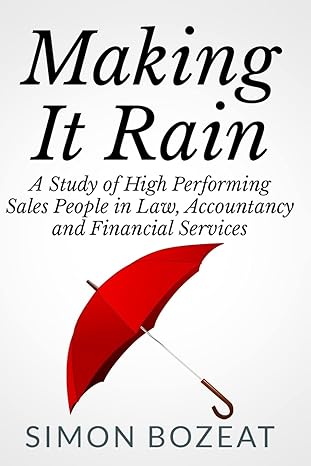Answered step by step
Verified Expert Solution
Question
1 Approved Answer
dividend of $0.42 per share this year. It also provided the following data excerpts from this year's financial statements: Cashi Accounts receivable Inventory Current assets
dividend of $0.42 per share this year. It also provided the following data excerpts from this year's financial statements: Cashi Accounts receivable Inventory Current assets Total assets Current liabilities Total liabilities Common stock, $1 par value Ending Balance $ 27,000 Beginning Balance $ 43,800 $ 41,300 $ 82,000 $ 105,000 $ 230,000 $ 48,000 $ 45,100 $ 120,100 $ 312,000 $ 49,500 $ 48,000 $ 133,100 $ 263,800 $ 34,500 $ 73,800 $ 105,000 $ 190,000 $ 312,000 $ 263,800 This Year Total stockholders' equity Total liabilities and stockholders' equity Sales (all on account) $ 580,000 Cost of goods sold Gross margin Net operating income Interest expense Net income $ 336,400 $ 243,600 $ 49,500 $ 3,000 $ 32,550 Foundational 14-3 (Algo) 3. What is the dividend payout ratio and the dividend yield ratio? (Do not round intermediate calculations. Round your answers to the nearest whole percentage place. i.e., 0.1234 should be considered as 12%.) Dividend payout ratio % Dividend yield ratio Markus Company's common stock sold for $1.75 per share at the end of this year. The company paid a common stock dividend of $0.42 per share this year. It also provided the following data excerpts from this year's financial statements: Cash Accounts receivable Inventory Current assets Total assets Current liabilities Total liabilities Common stock, $1 par value Total stockholders' equity" Total liabilities and stockholders' equity Sales (all on account) Cost of goods sold Gross margin Net operating income Interest expense Net income This Year $580,000 $ 336,400 $ 243,600 $ 49,500 $3,000 $ 32,550 Ending Balance Beginning Balance $ 27,000 $ 43,800 $ 41,300 $ 48,000. $ 45,100 $ 120,100 $ 312,000 $ 49,500 $ 48,000 $ 133,100 $ 263,800 $ 34,500 $ 73,800 $ 105,000 $ 82,000 $ 105,000 $ 230,000 $ 190,000 $ 312,000 $ 263,800 Foundational 14-4 (Algo) 4. What is the return on total assets (assuming a 30% tax rate)? (Round percentage answer to 1 decimal place. L.e., 0.123 should be considered as 12.3%) Return on total assets Markus Company's common stock sold for $1.75 per share at the end of this year. The company paid a common stock dividend of $0.42 per share this year. It also provided the following data excerpts from this year's financial statements: Cash Accounts receivable Inventory Current assets Total assets Current liabilities Total liabilities Common stock, $1 par value Total stockholders' equity Total liabilities and stockholders' equity Sales (all on account) Cost of goods sold Gross margin Net operating income Interest expense Net income This Year $580,000 $ 336,400 $ 243,600 $ 49,500 $ 3,000 $ 32,550 Ending Balance $27,000 Beginning Balance $ 43,800 $ 48,000 $ 41,300 $ 45,100 $ 120,100 $ 312,000 $ 49,500 $82,000 $ 105,000 $230,000 $ 312,000 $ 48,000 $ 133,100 $ 263,800 $ 34,500 $ 73,800 $ 105,000 $ 190,000 $ 263,800 Foundational 14-6 (Algo) 6. What is the book value per share at the end of this year? (Round your answer to 2 decimal places.) Book value per share Markus Company's common stock sold for $1.75 per share at the end of this year. The company paid a common stock dividend of $0.42 per share this year. It also provided the following data excerpts from this year's financial statements: Cash Accounts receivable Inventory Current assets Total assets Current liabilities Total liabilities Common stock, $1 par value Total stockholders' equity Total liabilities and stockholders' equity Sales (all on account) Cost of goods sold Gross margin Net operating income Interest expense Net income This Year $ 580,000 $336,400 $ 243,600 $ 49,500 $3,000 $ 32,550 Ending Balance $27,000 $ 48,000 Beginning Balance $ 43,800 $ 45,100 $ 120,100 $ 312,000 $ 49,500 $ 82,000 $ 41,300 $ 48,000 $133,100 $ 263,800 $ 34,500 $ 73,800 $ 105,000 $ 105,000 $ 230,000 $ 190,000 $ 312,000 $263,800 Foundational 14-9 (Algo) 9. What is the accounts receivable turnover and the average collection period? (Use 365 days in a year. Round your intermediate and final answers to 2 decimal places.) Accounts receivable turnover Average collection period days
Step by Step Solution
There are 3 Steps involved in it
Step: 1

Get Instant Access to Expert-Tailored Solutions
See step-by-step solutions with expert insights and AI powered tools for academic success
Step: 2

Step: 3

Ace Your Homework with AI
Get the answers you need in no time with our AI-driven, step-by-step assistance
Get Started


